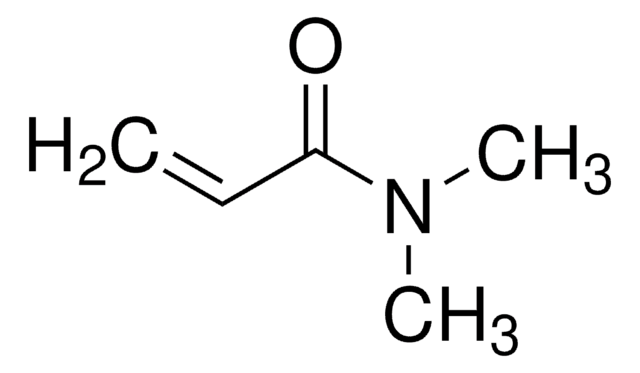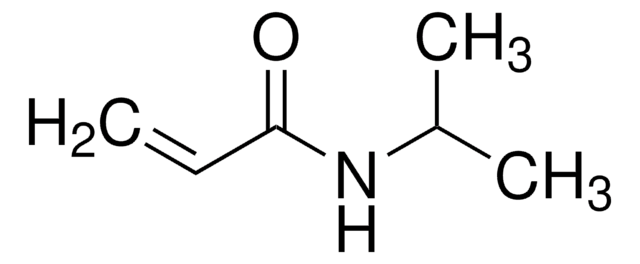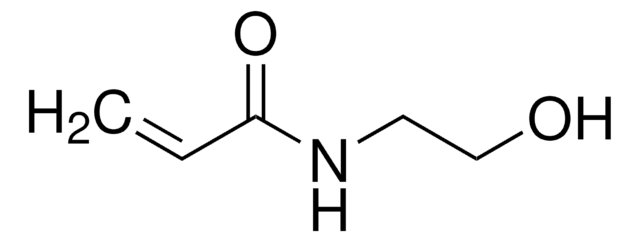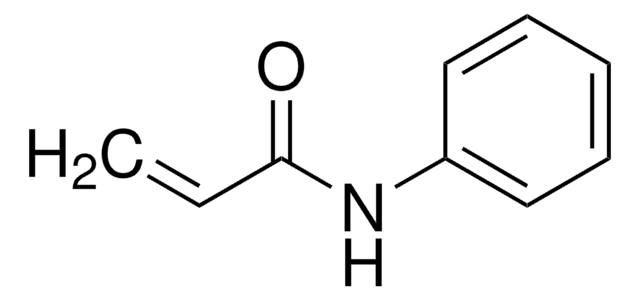411779
N-tert-Butylacrylamide
97%
Sinónimos:
N -(1,1-Dimethylethyl)-2-propenamide, N -t -Butylacrylamide
About This Item
Productos recomendados
assay
97%
form
solid
mp
126-129 °C (lit.)
SMILES string
CC(C)(C)NC(=O)C=C
InChI
1S/C7H13NO/c1-5-6(9)8-7(2,3)4/h5H,1H2,2-4H3,(H,8,9)
InChI key
XFHJDMUEHUHAJW-UHFFFAOYSA-N
¿Está buscando productos similares? Visita Guía de comparación de productos
General description
Application
Certificados de análisis (COA)
Busque Certificados de análisis (COA) introduciendo el número de lote del producto. Los números de lote se encuentran en la etiqueta del producto después de las palabras «Lot» o «Batch»
¿Ya tiene este producto?
Encuentre la documentación para los productos que ha comprado recientemente en la Biblioteca de documentos.
Los clientes también vieron
Nuestro equipo de científicos tiene experiencia en todas las áreas de investigación: Ciencias de la vida, Ciencia de los materiales, Síntesis química, Cromatografía, Analítica y muchas otras.
Póngase en contacto con el Servicio técnico

![[Pd(OAc)2]3 reagent grade, 98%](/deepweb/assets/sigmaaldrich/product/structures/508/249/99a0ef2c-b77c-4d73-8ed9-0cca05b6b41f/640/99a0ef2c-b77c-4d73-8ed9-0cca05b6b41f.png)





